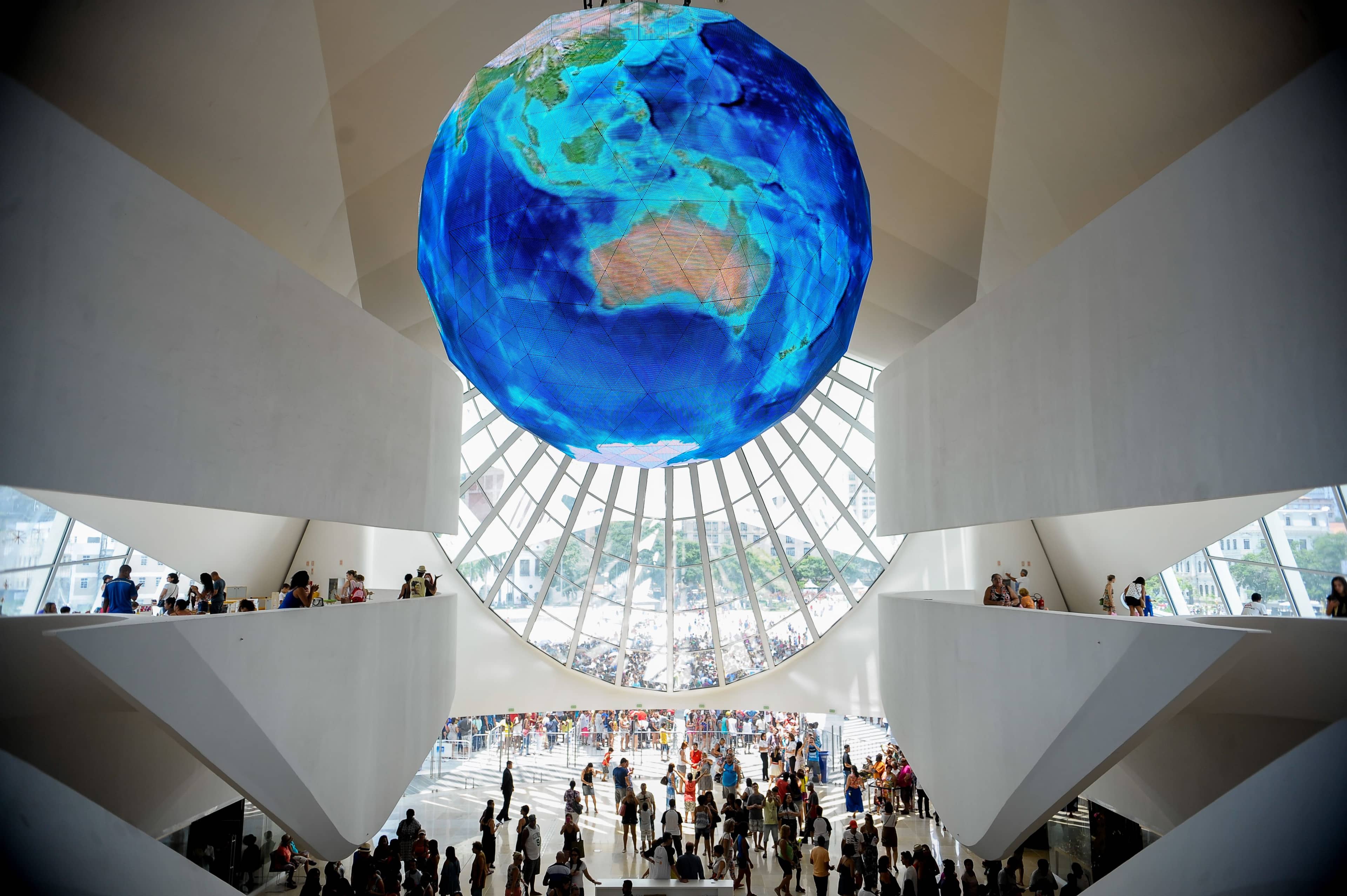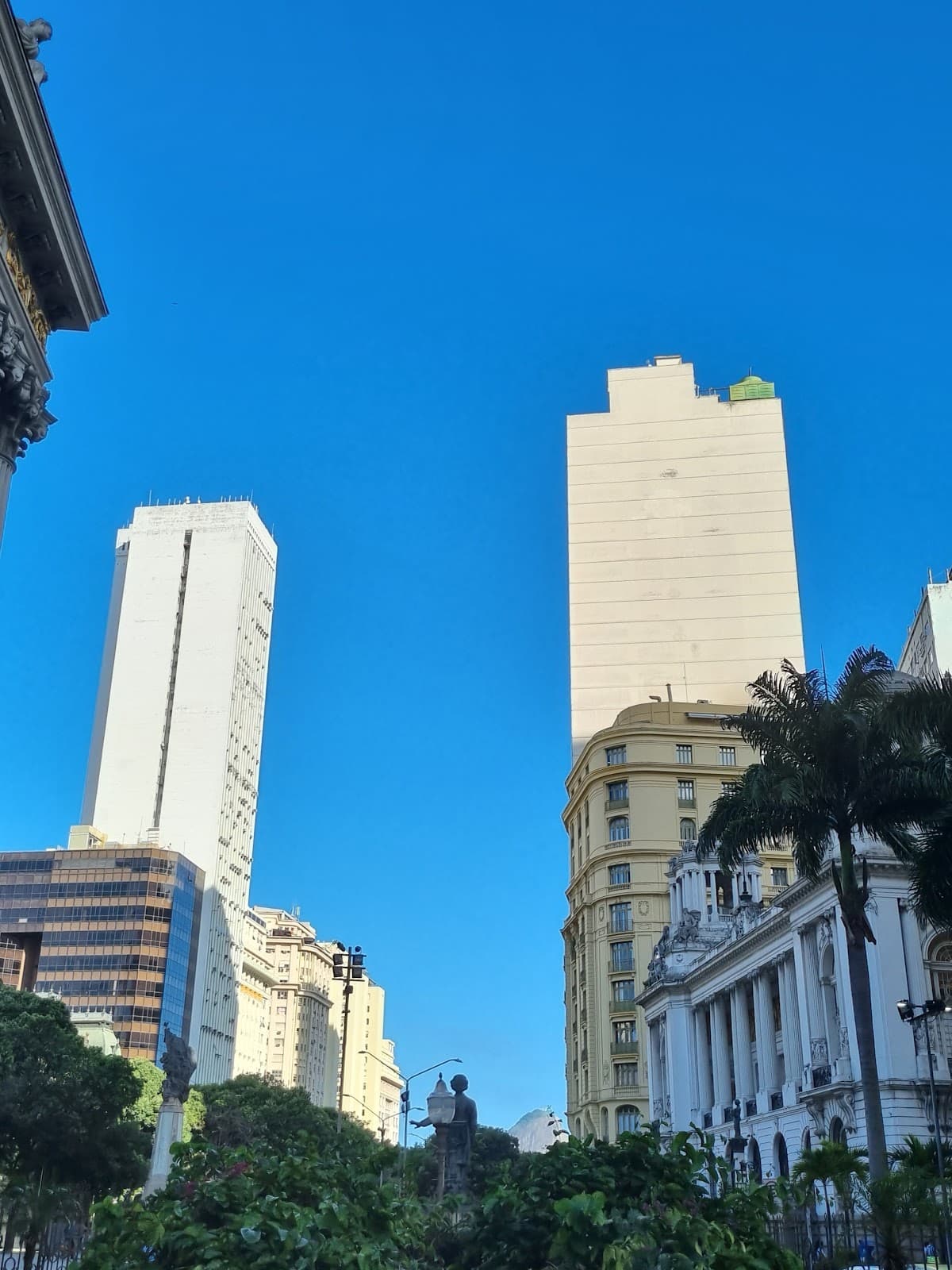
Museum of Tomorrow Rio de Janeiro
A futuristic science museum in Rio de Janeiro, exploring humanity's challenges and opportunities for a sustainable future.

Highlights
Must-see attractions

Social
From TikTok & Reddit
Best Time
Fewer crowds, better experience

Museum of Tomorrow Rio de Janeiro
Best Time
Fewer crowds, better experience

Highlights
Must-see attractions
A futuristic science museum in Rio de Janeiro, exploring humanity's challenges and opportunities for a sustainable future.
"This museum has an exquisite architecture, also its message focused on conservation is inspiring. It's worthy!"

Allocate ample time
Plan for at least 3 hours to fully explore the exhibits and absorb the information. :clock1:
Free admission is a plus!
Enjoy this engaging science museum without an entry fee. :moneywithwings:

Highlights
Discover the most iconic attractions and experiences

The 'Us' Exhibition
Main Exhibition
An immersive experience showcasing biodiversity and humanity's role within ecosystems.

The 'Earth' Section
Main Exhibition
Explore the wonders of our planet and the climate challenges we face through interactive displays.

The Building's Architecture
Exterior
Admire the striking neofuturistic design by Santiago Calatrava, a sustainable marvel.

The 'Tomorrow' Exhibit
Main Exhibition
Contemplate the possibilities and challenges of humanity's future through innovative installations.
Plans like a pro.
Thinks like you
Planning Your Visit
Beat the Crowds for a Better Experience
Free Admission & What to Expect
Best Times
Insider Tips
from TikTok, Instagram & Reddit
Allocate ample time
Plan for at least 3 hours to fully explore the exhibits and absorb the information. :clock1:
Free admission is a plus!
Enjoy this engaging science museum without an entry fee. :moneywithwings:
Interactive exhibits await
Engage with the displays designed to make you think about the future and sustainability. :bulb:
Consider the surrounding area
If it's too crowded inside, explore the waterfront and other attractions nearby. :world_map:
Tips
from all over the internet
Allocate ample time
Plan for at least 3 hours to fully explore the exhibits and absorb the information. :clock1:
Free admission is a plus!
Enjoy this engaging science museum without an entry fee. :moneywithwings:
Interactive exhibits await
Engage with the displays designed to make you think about the future and sustainability. :bulb:
Consider the surrounding area
If it's too crowded inside, explore the waterfront and other attractions nearby. :world_map:
Capture the architecture
Don't forget to admire the stunning exterior design by Santiago Calatrava. :camerawithflash:
What Travellers Say
Reviews Summary
Visitors praise the Museum of Tomorrow for its inspiring message on sustainability and its stunning, modern architecture. The interactive exhibits are a major highlight, prompting reflection on humanity's future and our planet's challenges. While some find the exhibits educational, a few noted minor inaccuracies or areas that could be explored in more depth. Overall, it's considered a worthwhile and impactful experience in Rio de Janeiro.
"A great experience to showcase the sustainability narratives to the people!
My favorite is the one that the people sit between about 7 big screens showcase many disasters and climate change because of our impacts. It definitely deep and have lasting impact to myself. I also loved the one that showcasing the biodiversity and we as a person is one of the ecosystem 💚✨️
It would be great if you spend 3 hours here to experience the details one by one. I havent got any time to experience all the details."
Yessica Megistriani
"Very nice and interesting museum. The concept is very good and names a lot of sense to be in Brazil the land of Amazon. It's promotes saving the planet"
miggs
"A very modern and well designed tribute to the sciences. As you drift through a gigantic hall, resembling a spacecraft you encounter all the wonders of our common earth and climate challenges we currently face.
Interactive installations invite the audience to think and participate. Some topics could be covered more indepth but there is enhough to take in for everyone."
Roger de Beaumont
What People Like
What People Dislike
Frequently Asked Questions
🚇 🗺️ Getting There
The Museum of Tomorrow is located in the Port Zone of Rio de Janeiro. You can reach it by VLT (light rail), bus, or taxi/ride-sharing. Many visitors find the VLT convenient for accessing the museum and other attractions in the revitalized port area.
Parking in the central Rio area can be challenging and expensive. It's generally recommended to use public transportation like the VLT or ride-sharing services to avoid parking hassles.
The VLT (light rail) is an excellent way to explore the revitalized port area, connecting you to other points of interest. Walking is also a pleasant option to enjoy the waterfront.
Yes, the museum is part of a larger regeneration project in the port area. You can easily combine it with visits to other cultural sites like the MAR (Museu de Arte do Rio) or explore the waterfront.
Yes, you can take a bus or metro to the city center and then transfer to the VLT or another bus heading towards the port area. The journey might take around 45-60 minutes depending on traffic.
🎫 🎫 Tickets & Entry
Admission to the Museum of Tomorrow is free! This makes it a very accessible attraction for all visitors.
While admission is free, it's always a good idea to check the official website for any potential booking requirements or special event tickets, especially during peak seasons.
The museum typically opens from Tuesday to Sunday. It's best to check the official website for the most up-to-date opening hours and any potential closures.
The museum is generally free every day it's open, which is a significant draw for visitors.
The museum often hosts temporary exhibitions and events. It's recommended to check their official schedule online to see what's on during your visit.
🎫 🧭 Onsite Experience
The museum is a science museum focused on sustainability, climate change, and the future of humanity, exploring our relationship with the planet.
Most visitors recommend spending at least 3 hours to fully experience the interactive exhibits and absorb the information presented.
Yes, the museum is known for its highly interactive and immersive exhibits that engage visitors in exploring scientific concepts and future possibilities.
Highlights include the 'Us' exhibition on biodiversity, the 'Earth' section on climate challenges, and the 'Tomorrow' exhibit on future possibilities. The building's architecture itself is also a major draw.
Yes, the interactive nature of the exhibits makes it engaging for children, though some concepts might be more complex for very young ones.
📸 📸 Photography
Photography is generally allowed for personal use, but flash photography might be restricted in certain areas to protect the exhibits. Always check for signage.
The exterior architecture is incredibly photogenic. Inside, the 'Digital Globe' and various immersive installations offer unique photo opportunities.
While general photography is permitted, it's wise to avoid professional shoots without prior permission and to be mindful of other visitors.
Morning light can be beautiful for exterior shots of the building. Inside, the lighting is designed for the exhibits, so any time is good for capturing the displays.
Drone usage is typically prohibited in and around major attractions in urban areas like Rio de Janeiro due to safety and privacy regulations. It's best to assume this is not allowed.
For Different Travelers
Tailored advice for your travel style
👨👩👧 Families with Kids
While admission is free, consider visiting during off-peak hours to ensure a more comfortable experience for younger children. The museum's modern design and futuristic themes are sure to spark curiosity and imagination. Remember to allocate enough time, as kids might want to spend longer at their favorite interactive displays.
🌍 Eco-Conscious Travelers
The museum's architecture itself is a prime example of sustainable design, utilizing solar energy and natural light. It's an inspiring place that reinforces the importance of conservation and encourages visitors to reflect on their own impact. The immersive displays are designed to leave a lasting impression and motivate action.
📸 Photography Enthusiasts
Inside, the museum's immersive exhibits provide dynamic and often abstract visuals. The 'Digital Globe' and various light installations offer captivating scenes. While general photography is allowed, be mindful of flash restrictions and other visitors to ensure everyone can enjoy the experience.
Deep Dives
In-depth insights and expert knowledge
The Architecture of Tomorrow
The design incorporates advanced sustainable features. The large, wing-like solar panels on the roof are not just aesthetic; they track the sun to generate energy, significantly reducing the building's energy consumption. Natural light is maximized throughout the interior, further minimizing the need for artificial lighting. The museum uses approximately 40% less energy than conventional buildings of its size, showcasing a commitment to ecological principles from the ground up.
Visitors often marvel at the building's unique form and its integration with the surrounding Guanabara Bay. It's a testament to how modern design can be both visually stunning and environmentally responsible, making it a must-see even before you step inside for the exhibits.
Exploring the Future Through Interactive Exhibits
The exhibits are highly interactive, encouraging visitors to participate and reflect. For instance, the 'Us' exhibition delves into biodiversity and our interconnectedness with ecosystems, while the 'Earth' section confronts the realities of climate change and its impacts. Some visitors found certain information, like the discussion on nuclear power's carbon emissions, to be debatable, but the overall aim is to provoke critical thinking.
Many visitors leave with a profound sense of impact, particularly from the immersive displays that showcase environmental disasters and the consequences of human actions. The museum's message is clear: to inspire a conscious approach to building a sustainable future.
Navigating the Museum and Its Surroundings
Getting to the museum is straightforward, with the VLT (light rail) being a popular and convenient option. This modern tram system connects various parts of the city center and the port area, making it easy to hop between attractions. Some visitors have noted that the central Rio area can be chaotic, especially with traffic, so planning your transport in advance is advisable.
If the museum is exceptionally crowded, some visitors suggest enjoying the exterior architecture and the waterfront, or even considering alternative nearby attractions if the internal queues are too daunting. However, for those who do enter, the experience is generally considered worthwhile and impactful.






Social
from TikTok, Instagram & Reddit